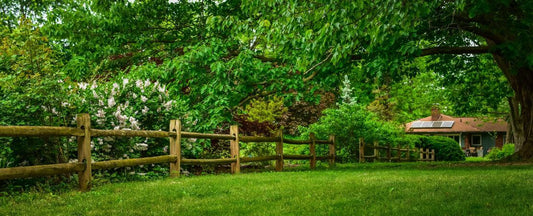Hellebore FAQs

Answers to Frequently Asked Questions About Hellebores
Welcome to our comprehensive FAQ page dedicated to hellebore flowers. No matter if you're familiar with growing hellebores or just starting out, this resource is designed to answer your questions and provide valuable insights into growing these beautiful and resilient perennials. Hellebores, also known as Lenten roses, are increasingly popular among gardeners for their early bloom times, often popping up in gardens from late winter into spring when other plants remain dormant. With their graceful, nodding flowers available in a spectrum of colors, from pristine whites to vibrant purples, hellebores inject a burst of color into shady garden spots during colder months.
Here are some of the most commonly asked questions about these enchanting plants, tailored to give you with the knowledge and confidence to grow and enjoy hellebores in your garden for many seasons to come.
What are the best uses of hellebores (Lenten roses) in your garden?
Hellebores are excellent cut flowers, enhancing foundation gardens, borders, and shaded areas in your landscape. Whether a feature in your cottage gardens or pollinator-friendly landscapes, these plants provide essential nectar to early-emerging pollinators, ensuring your garden remains a reliable food source when other blooms are scarce.
Can you grow hellebores in patio pots and container gardens?
Absolutely. Hellebores do have an extensive root system, necessitating spacious pots for optimal growth. To prevent overcrowding, thin out self-seeding plants periodically.
Do hellebores change color?
Indeed they do! Hellebore plants undergo color transformations as they mature, which is perfectly natural--and captivating. From white varieties transitioning to delicate pinks to pale greenish-pink blooms deepening in hue, each stage of their development offers a new color palette.
Can you grow hellebores indoors?
While it's possible to cultivate hellebore Lenten roses indoors under the right conditions, caution is advised due to their mild toxicity. Optimal growth occurs when these plants are transitioned outdoors into shady locations under the protective canopy of deciduous trees, allowing them to bask in spring sunlight while having refuge from summer heat.
How long do hellebores take to mature?
Patience is key when nurturing hellebores. They typically require 18 months to reach full maturity, attaining heights of 18 to 24 inches. Those grown from seeds may take several years to achieve their mature size.
When is the best time to plant hellebores?
While hellebores can be planted year-round, fall planting gives these perennials time to establish themselves before winter's chill sets in.
What are other common names for hellebores?
Renowned for their global popularity and unique charm, hellebores are affectionately known by a variety of names, including Christmas Rose, Lenten Rose, Snow Rose, and Oracle Flower.
Do Hellebores spread?
Yes, hellebores have a natural inclination to spread, thanks to their extensive root systems and self-seeding habits. To manage their growth and prevent overcrowding, periodic thinning of plants may be necessary.
What to do with Hellebores in the summer?
As summer approaches, proper care ensures your hellebores survive summer's the heat. Here's what you can do:
- Mulch: Apply a layer of organic mulch around the base of hellebores to conserve moisture and suppress weed growth, promoting healthy development.
- Watering: While hellebores are drought-tolerant once established, adequate watering during prolonged dry spells ensures optimal growth and prevents stress.
- Deadheading: Remove spent blooms to encourage continuous flowering and maintain a tidy appearance throughout the summer months.
- Fertilization: Provide a balanced fertilizer in early summer to support vigorous growth and vibrant blooms.
- Dividing: Consider dividing overcrowded hellebores in late summer or early fall to rejuvenate plants and promote better airflow, reducing the risk of disease.
What is black death in hellebores?
Hellebore black death, a grave concern for hellebore fans, is typically attributed to the Helleborus net necrosis virus (HeNNV). This debilitating disease manifests as stunted growth, deformities, and distinctive black streaks and netting patterns on affected plants.
Are Hellebores deer resistant?
Yes, hellebores have remarkable deer resistance, making them a reliable choice for gardens frequented by these four-legged visitors. Their bitter taste acts as a deterrent, ensuring your blooms remain untouched and pristine whether in flower of with lush foliage.
Are hellebores toxic to pets?
While hellebores have a bitter taste that deters most pets from ingesting them, caution should still be exercised since can cause mild toxicity if consumed in large quantities. Severe reactions are rare, with symptoms typically subsiding within 24 hours.
Have more questions about hellebores? Connect with us on social media or drop us an email at info@waysidegardens.com to tap into the expertise of our horticulturalists and service team. We're here to help you cultivate thriving gardens.


